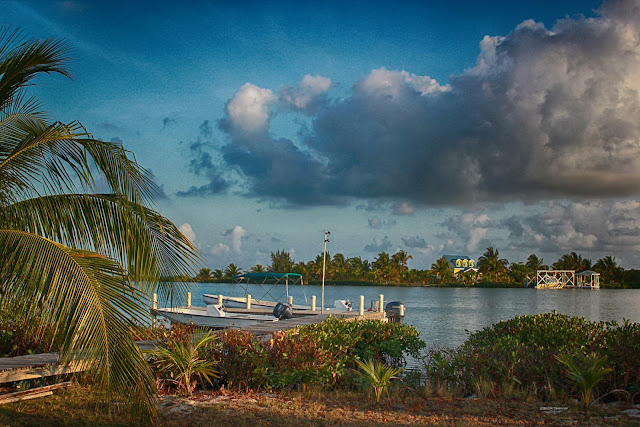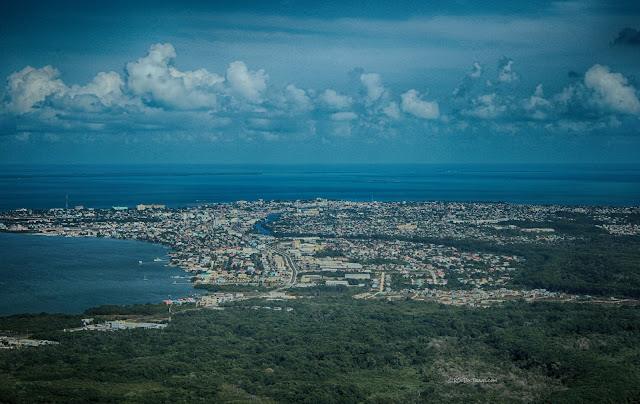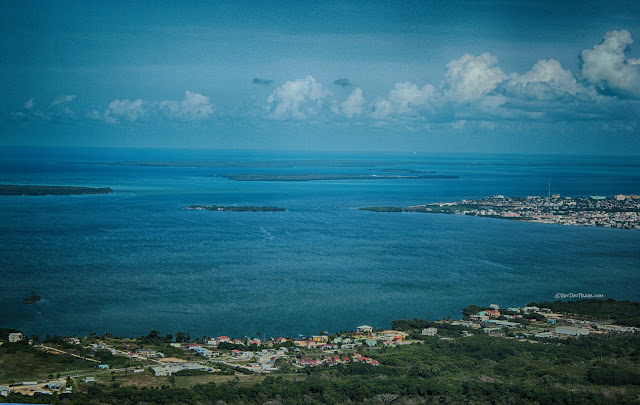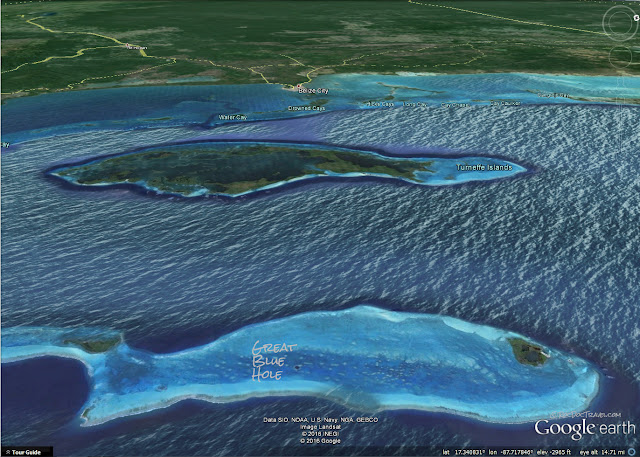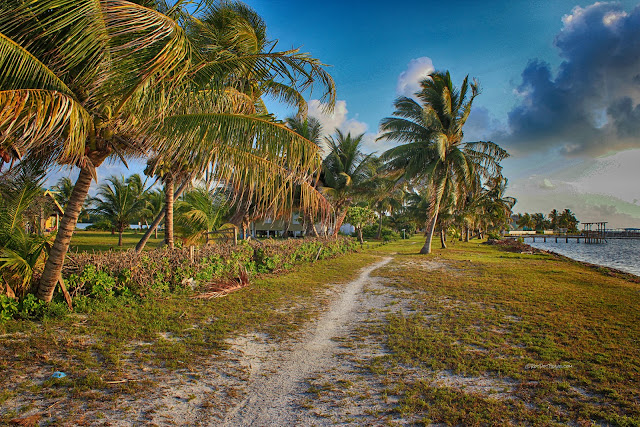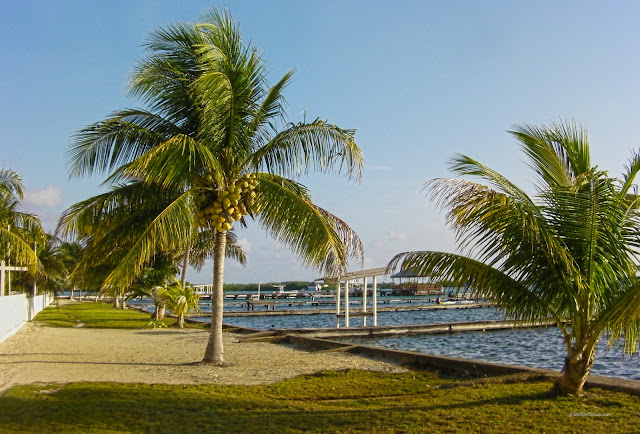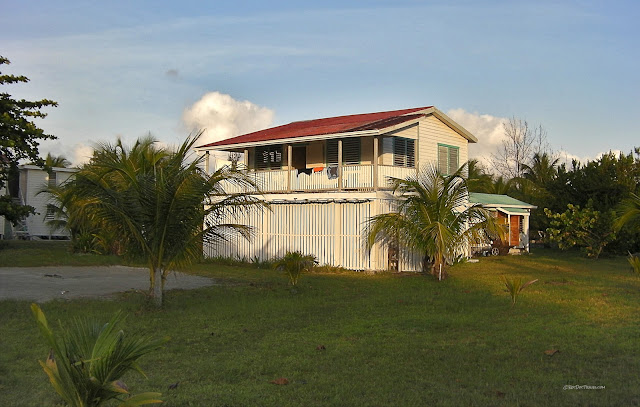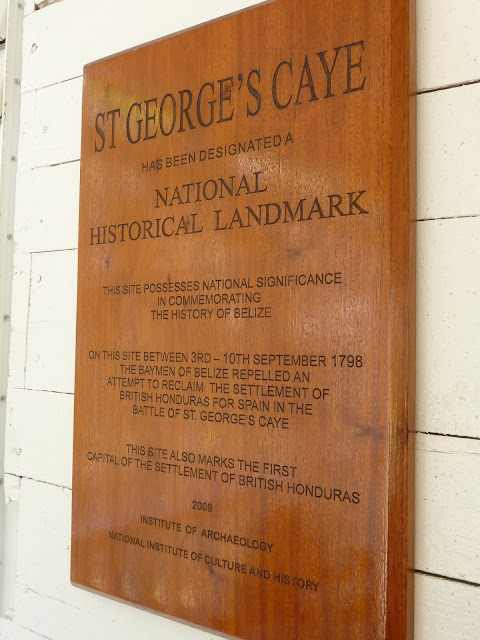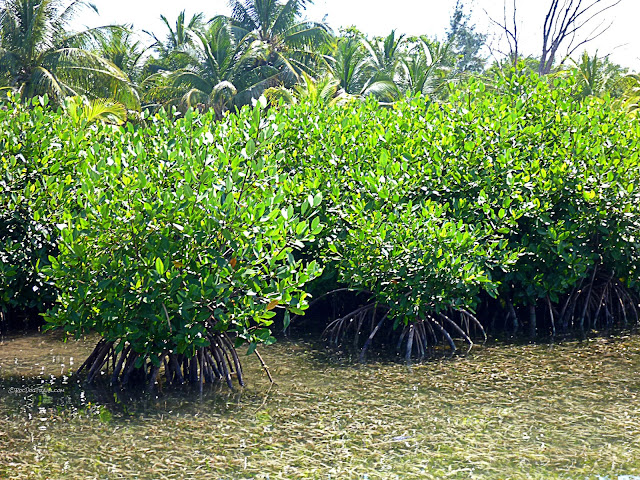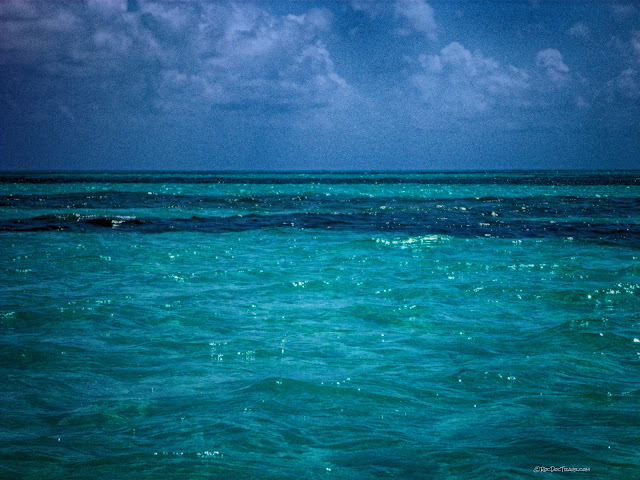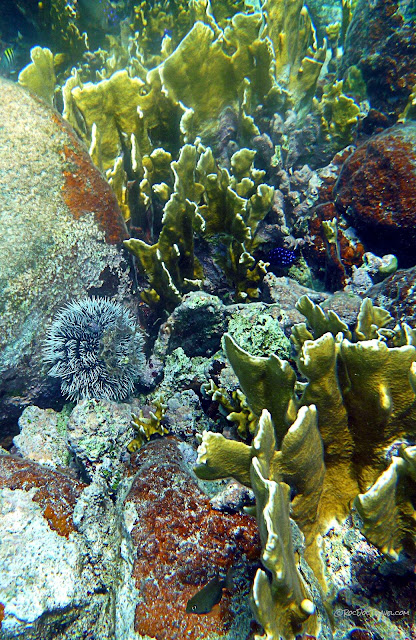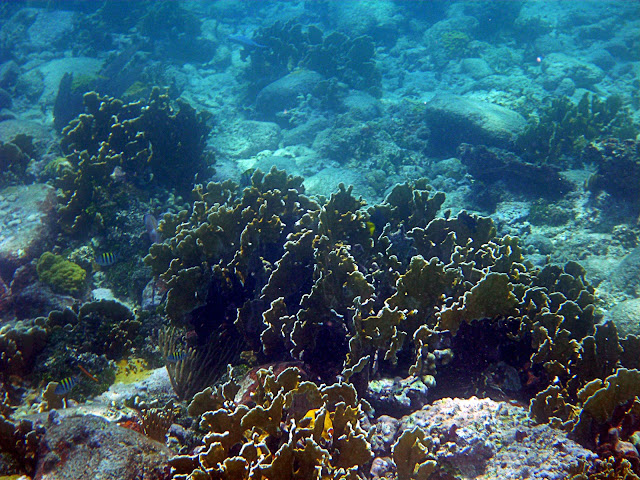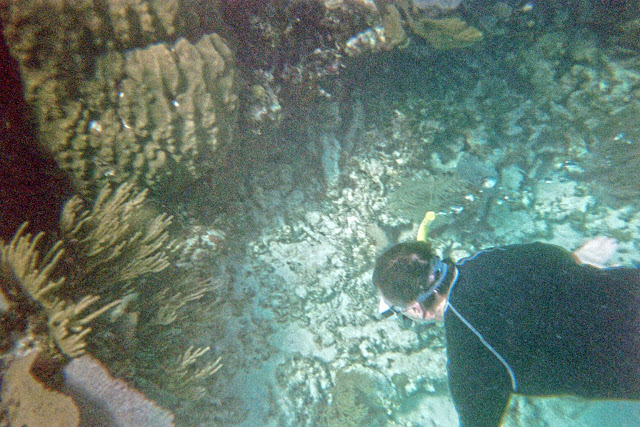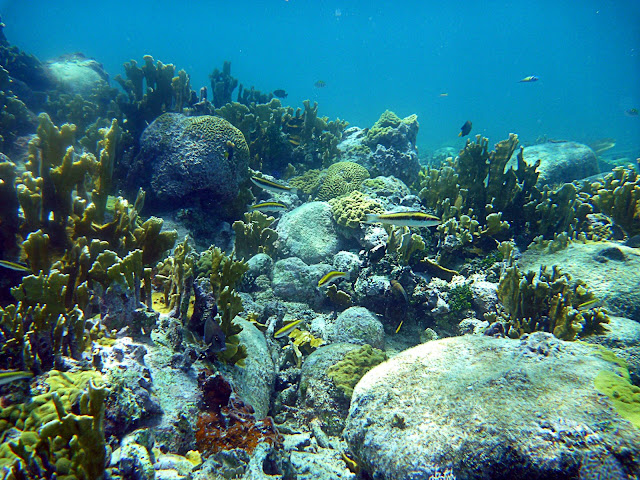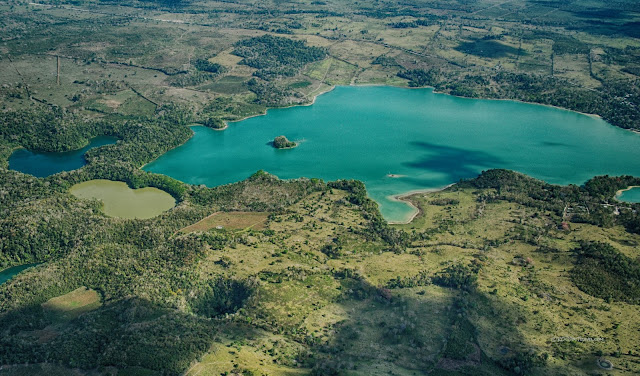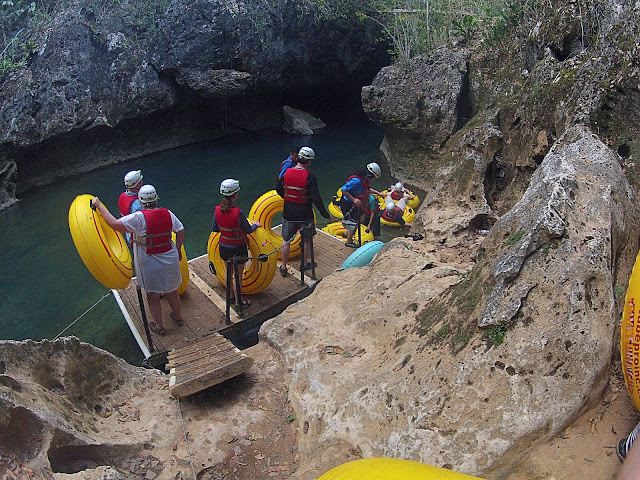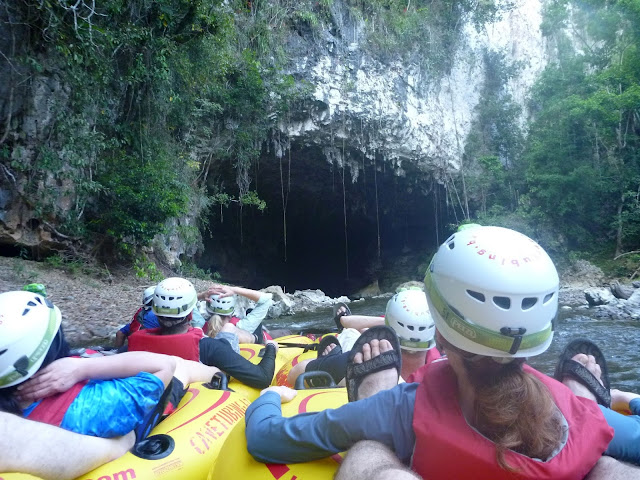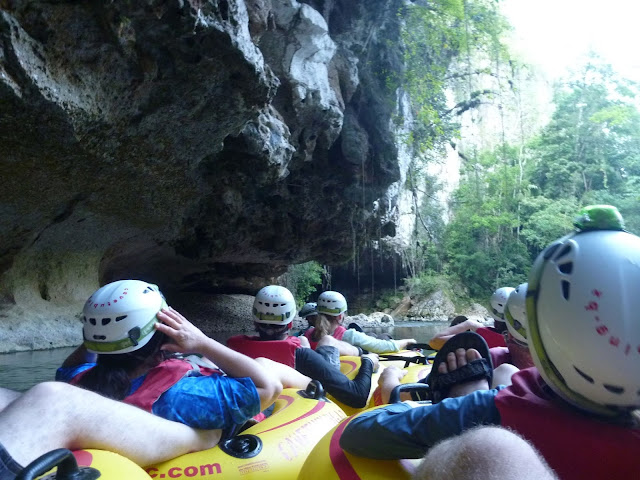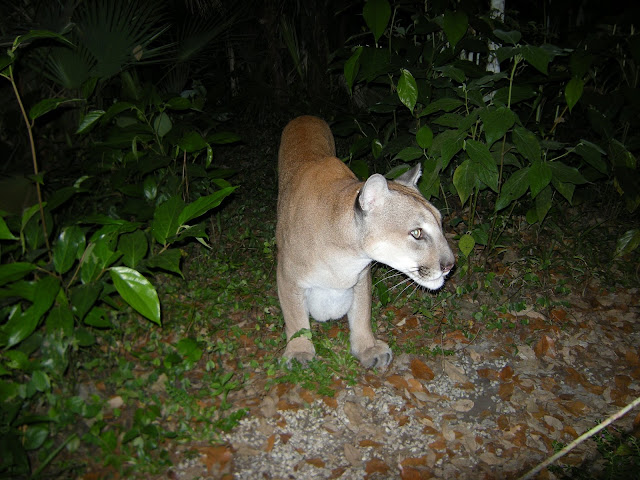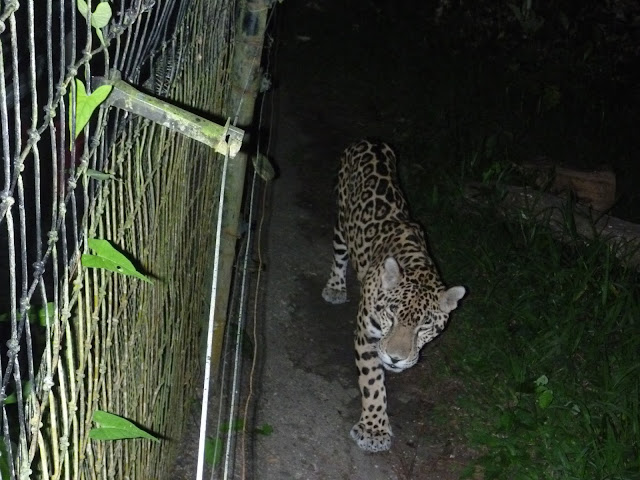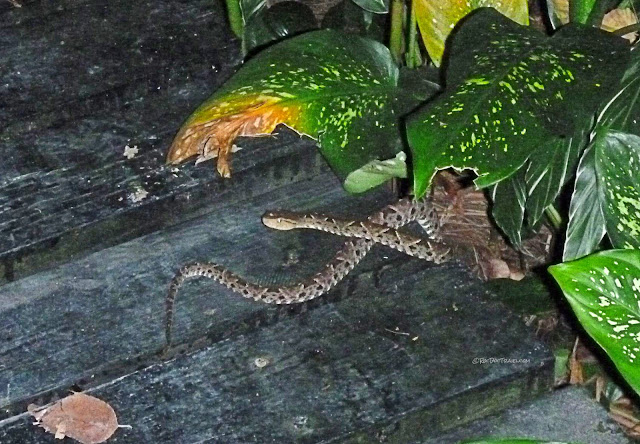Belize
Belize
Belize is home to the largest reef in the northern hemisphere! It's an inexpensive, friendly subtropical paradise - and they even speak English, so what are you waiting for? We'll explore the reef, float through an underground river, and visit a unique jungle zoo.Belize City from the air. The great reef lies just offshore, and is marked by a series of islands called Cays (pronounced "keys").
Interactive Google Map of Belize City and the cays.
Geologists go to Belize to study the reef and limestone bedrock. Tourists go to Belize because it's awesome! Whichever you are, you really should put Belize on your list to enjoy an unspoiled tropical paradise that has world-class reef, diving, snorkeling, caving, and island getaways. And a zoo in the rain forest!
Aerial view past Belize City to the cays on the reef. Everything is so flat here, I'm nervous about hurricanes for them, although they're fortunately infrequent here. They've had about 16 damaging hurricanes since 1930, most recently Hurricane Earl in 2016.
Google Earth image of Belize and the reef.
View to the northwest showing the Great Blue Hole on the outer reef and Belize City on a peninsula on the coast.
Google Earth view northwestward of the inner cays and Belize City. St. George's Caye is not far offshore. This part of the reef is called the carbonate shelf because it is covered with calcium carbonate mud produced by algae and other organisms.
Travel to Belize
Airlines: Several major airlines fly to Belize City, most often from southern U.S. cities like Houston and Miami.Ground Transportation: You can rent a car or arrange a shuttle van through an agency. Driving in Belize is a bit shocking, but is managable and traffic is light.
Lodging: Many good hotels are available in Belize City, and smaller places are available on the islands. They're easy to find online. Take major travel website advice. We stayed on St. George's Caye that is NE of Belize City, and loved it. We also stayed in Belize City at the Chateau Caribbean, which was good but simple.
Boating, Diving, Snorkeling: Belize City has a lot of dive shops that will set up everything for you, sometimes including lodging on the Cayes. We used SeaSports Belize, and loved every minute.
Food & Water: Drink bottled water, but enjoy the food! It's mostly typical Caribbean fare with unique Belize twists. Try the traditional chicken!
Affordability: Belize is very affordable! Having dive guides, tubing, and boating are not as expensive as you may think, so do some homework and go for it!
Currency: American dollars!
Considerations: Belize is quite a poor country, so while you're being frugal keep in mind how much the people benefit from spreading your money around.
Great Blue Hole: We didn't get out that far on the reef, but plenty of guides will be happy to take you there. It is a karst feature (a sinkhole) that formed when sea level was lower during the last ice age.
St. George's Caye
St. George's Caye ("key") is one of the most developed islands, but that's not saying much! You can stay on the caye through one of the dive shops (as we did) or a tour agency.
St. George's is a quiet, sparsely populated, unspoiled tropical paradise, and that's hard to find any more.
Wander around and relax!
We stayed in this open-air house. It's warm at night!
St. George's played a role in the Battle of St. George's in 1798 between England and Spain. I'm glad the English won, because I don't speak much Spanish.
Just waiting for the nuts to fall.
Take a look at the mangroves while you're on the islands. This group of deep-rooted plants are vital in the ecosystem because they stabilize sandbars and islands against storms and erosion. Without them, many islands would disappear.
Belize Reef
You can wade in waist-deep water miles from land! This explains a lot of geological evidence we find in carbonate rocks that indicate a shallow water environment. The locals told us they like to barbeque out there by just standing the grill in the water. My bucket list just grew!
We had a few divers in our group, but mostly rank-amateur snorkelers. The great thing about the Belize reef is that it's so easy to explore. The water is only deep around the edges, and your dive guide will know all the best spots for your ability level.
This is a shipwreck marked by the round ballast rocks, which were often hauled all the way from England and don't resemble the local rocks at all.
Several views of the corals and fish.
Yep, even the Roc Doc got underwater for this!
Brain coral can be several feet across, like this one.
Here are some algae that live on the bottom. They are incredibly important geologically because they form calcium carbonate mud that becomes limestone. In bedrock all around the world, you can find pieces of these algae and the critters that live with them, like echinoderms (including sea lillies [crinoids], stars, and urchins).
We bleached these algae to speed up the limestone-forming process.
Then after an amazing day in the water, you have this kind of relaxing scene to enjoy.
Cave Tubing
A view of karst hills about 2 miles away. "Karst" means features formed by dissolution by groundwater of the calcium carbonate (like Tums) in limestone. It's named after a district in Germany, and includes sinkholes, disappearing streams, cave networks, and towers. Because the bedrock in Belize is mostly limestone, karst features are everywhere. Karst features of note in the U.S. include Carlsbad Caverns in New Mexico, Mammoth Caves in Kentucky, and the many sinkholes in central Florida.
The round sinkholes here are easy to spot. The blue-green lake fills a collection of coalesced sinkholes.
Our objective was to explore the karst caves by floating on the Cave Branch river that flows through them.
We entered the river in a sinkhole.
The river took us gently into the subterranean cave system. No worries! The guides bunch everybody up so nobody gets separated - makes their life easier. The helmets and float vests keep lawyers away, too.
Parts of the caves have incredibly long spans of limestone overhead. The groundwater and river have preferentially dissolved specific layers, leaving behind the more resistant ones in the floors and ceilings. Bats make holes into the ceilings by dissolving the limestone with their urine, so the ceilings appear deeply pitted.
The river occasionally emerges from the caves into the rain forest.
On a few stretches, the river passes along the sides of sinkholes, giving you a view out into a patch of jungle. I didn't expect this kind of river-sinkhole interaction.
The Belize Zoo
If you go to Belize, DON'T MISS THE ZOO! It houses over 45 species of native animals in their native habitat, and so hardly feels like a zoo and more like a rain forest with a few walkways. They specialize in adopting problem or misused animals. Visit their website by clicking here.
We were fortunate to arrange an after-dark visit to the zoo, when most of the animals are up and about. I highly recommend it! When you're on a geological trip, making side-stops like this keep the place and the people in perspective.
All the while we were walking around the zoo, howler monkeys were all around in the trees making noise. They wander wherever they want, and their sounds can be Loud and a little scary!
A jaguar being friendly. I'm still glad there's a fence! With the right arrangements, you can feed chicken to the big cats.
Another big cat, possibly a cougar. He's not on the zoo's list.
Another jaguar.
You know, snakes creep me out a bit, but I wouldn't pass up a chance to hold a big one. But doing it AT NIGHT IN THE JUNGLE was pretty creepy! Force a smile for the camera!
Our guide JUMPED when he saw this fer-de-lance on the walkway, the most deadly snake in the Americas! Two members of our group actually stepped over it. More people in Central America are bitten by the fer-de-lance than any other snake. They can be aggressive and defensive, can live in close proximity to people and development, and can move fast. That's a dangerous recipe!
After visiting the zoo, I am convinced that I'll NEVER go out into the jungle alone or without a good, wide trail!
At the end of a day in Belize, you can rest assured of a beautiful, relaxing sunset.
Related Posts: Guatemala, Carlsbad Caverns
